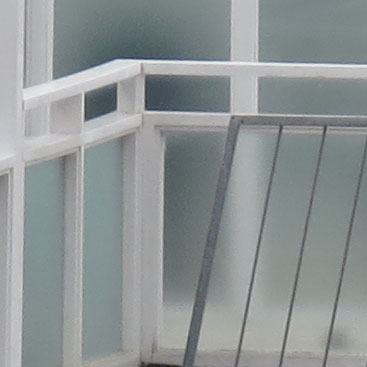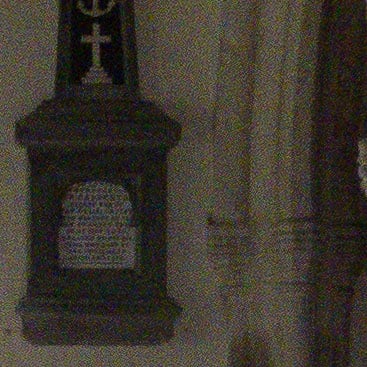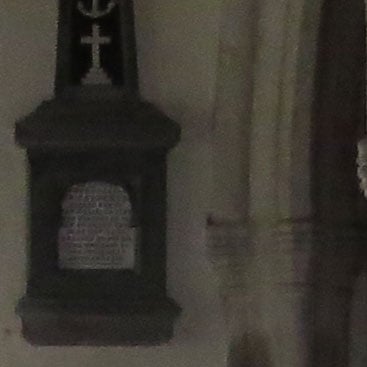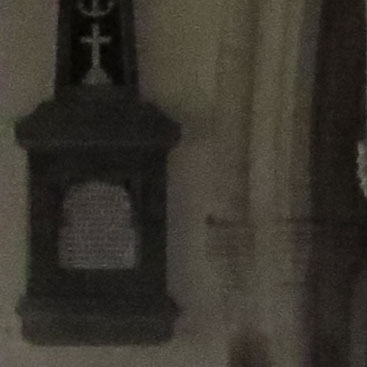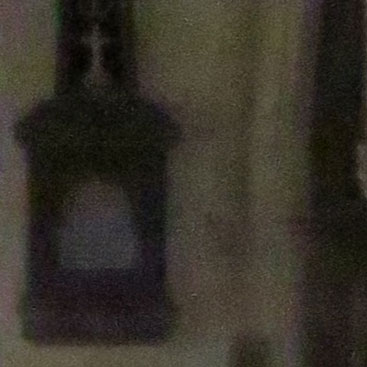Canon PowerShot SX50 HS review
-
-
Written by Ken McMahon
Quality
Canon SX50 HS vs Panasonic FZ200
|
Canon PowerShot SX50 HS |
Panasonic Lumix FZ200 | |
 |  | |
f4, 80 ISO |
f4, 100 ISO | |
 |  | |
f4, 80 ISO |
f4, 100 ISO | |
 |  | |
f4, 80 ISO |
f4, 100 ISO | |
 | 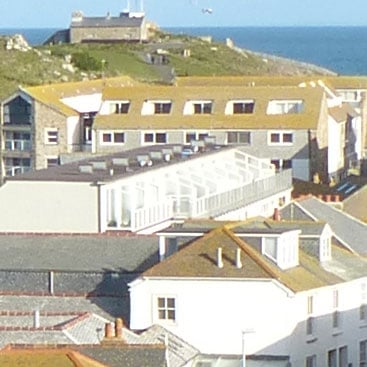 | |
f4, 80 ISO |
f4, 100 ISO |
Canon SX50 HS vs Panasonic FZ200 quality at 365mm equivalent
Canon PowerShot SX50 HS |
Panasonic Lumix FZ200 | |
 | ||
4.3-215mm at 65.4mm (365mm equiv) f5.6, 80 ISO |
25-600mm at 65.8mm (366mm equiv) f5.6, 100 ISO | |
 |  | |
4.3-215mm at 65.4mm (365mm equiv) f5.6, 80 ISO |
25-600mm at 65.8mm (366mm equiv) f5.6, 100 ISO | |
 |  | |
4.3-215mm at 65.4mm (365mm equiv) f5.6, 80 ISO |
25-600mm at 65.8mm (366mm equiv) f5.6, 100 ISO | |
 |  | |
4.3-215mm at 65.4mm (365mm equiv) f5.6, 80 ISO |
25-600mm at 65.8mm (366mm equiv) f5.6, 100 ISO |
Canon PowerShot SX50 HS results : Quality / RAW quality / Noise / RAW Noise
Canon SX50 HS vs Panasonic FZ200 RAW quality
|
Canon PowerShot SX50 HS |
Panasonic Lumix FZ200 | |
 |  | |
f4, 80 ISO |
f4, 100 ISO | |
 |  | |
f4, 80 ISO |
f4, 100 ISO | |
 |  | |
f4, 80 ISO |
f4, 100 ISO | |
 |  | |
f4, 80 ISO |
f4, 100 ISO |
Canon PowerShot SX50 HS results : Quality / RAW quality / Noise / RAW Noise
Canon SX50 HS vs Panasonic FZ200 Noise RAW
The image above was taken with the Canon PowerShot SX50 HS. The camera was set to Aperture priority mode with the aperture set to f4 and the sensitivity to 80 ISO. The SX50 HS metered an exposure of 1 second at f4, with exposure compensation set to +1EV to produce a sufficiently bright image with a histogram in the middle of the chart. The Lumix FZ200 metered an exposure of 1.6 seconds at f4 at 100 ISO. I processed both sets of files in Adobe Camera RAW using identical settings: Sharpening at 70 / 0.5 / 36 / 10, Luminance and Colour Noise Reduction both set to zero, and the Process to 2012 with the Adobe Standard profile. To further reduce any distracting visual differences between the crops I also set custom white balance to 4500K and tint to 0. These settings were chosen to reveal the differences in sensor quality and isolate them from in-camera processing. The high degree of sharpening with a small radius enhances the finest details without causing undesirable artefacts, while the zero noise reduction unveils what’s really going on behind the scenes – as such the visible noise levels at higher ISOs will be much greater than you’re used to seeing in many of my comparisons, but again it’s an approach that’s designed to show the actual detail that’s being recorded before you start work on processing and cleaning it up if desired. There are no big surprises here and these Raw crops pretty much confirm what we saw in the JPEG noise results. Cast your eye down the two columns and you’ll notice a marginal difference with the Lumix FZ200 showing slightly higher levels of noise throughout the sensitivity range. It’s not enough to make a massive difference, but at the lower ISO sensitivities, once the files are processed to JPEG, it does mean the Canon PowerShot SX50 HS has a slight edge with cleaner detail. As you progress up the sensitivity range the noise in both sensors quickly becomes very apparent, and by 800 ISO and beyond, though the Canon SX50 HS still enjoys a slight advantage, noise levels are so high that, once processing has been applied there’s little if anything between them. For most people, this won’t make much difference one way or the other. But if you’re after the best quality you can squeeze from these RAW files, the Canon SX50’s sensor provides a little more for you to work with. Now head over to my Canon SX50 HS sample images to see some more real-life shots in a variety of conditions, or head straight for my Verdict.
|
|
Canon SX50 HS vs Panasonic FZ200 Noise JPEG
The image above was taken with the Canon PowerShot SX50 HS. The camera was set to Aperture priority mode with the aperture set to f4 and the sensitivity to 80 ISO. The SX50 HS metered an exposure of 1 second at f4, with exposure compensation set to +1EV to produce a sufficiently bright image with a histogram in the middle of the chart. The Lumix FZ200 metered an exposure of 1.6 seconds at f4 at 100 ISO. I should note that the shutter speed limit in Aperture priority mode on the SX50 HS is 1 second and that the 100 ISO exposure was also 1 second, falling to 0.6s at 200 ISO so, had it been able to, the SX50 HS would most likely have set 1.2s for the 80 ISO exposure. One way around this limitation is to set manual exposure mode which allows you to select shutter speeds up to 15 seconds. But there’s a catch. Even in Manual, you can only select exposures longer than a second at the base 80 ISO setting. It’s a small thing, but if you do a lot of night shooting and long exposure photography it’s worth knowing about. So what about the crops? The 80 ISO crop from the SX50 is a little dark and it’s also a little noisy, you can spot a slight, but definite texture in the walls and the text in the memorial panel looks a little scuffy too. This noise wasn’t visible, at least not to the same degree in my outdoor test crops and I wonder if long exposure noise is the reason for the shutter speed limit above 80 ISO on the SX50 HS. At 100 ISO the noise is stil there, only now it’s fractionally clumpier. At 200 ISO it gets clumpier still; there are patches of blotchy pixels in the wall and the text, though still readable is beginning to lose its definition. At 400 ISO the text is barely legible – you can just make out the larger word Carpenter, but the game is now up for finer detail. Not good for large prints and pixel peeping, but for anything smaller 400 ISO is still good for everyday shooting. By 800 ISO though, the noise has the upper hand, the fine detail is all gone, medium sized detail is close behind and there are no longer any clean edges. 800 ISO is also the point at which the SX50’s colour saturation drops noticeably, so while you don’t notice the detail loss at smaller sizes, images look harsh and a little washed out. From 1600 ISO upwards there’s not much detail to find and full sized prints won’t impress anyone, but it still works for viewing at less than full screen size as does 3200 ISO. 6400 ISO is a brave move on a compact sensor, but little more than a marketing ploy. But if your subject is of personal value or newsworthy who knows, it might come in handy. A more useful tool is the SX50’s Handheld NightScene mode which produces a low-noise composite from a fast three-shot burst. Handheld Nighscene automatically sets the exposure and ISO sensitivity and the final crop shows it at 1600 ISO. A fair bit of detail is lost in the process along with the noise but it is nonetheless an improvement on the single-shot 1600 ISO crop. Compared with the crops from the Panasonic Lumix FZ200 once again, there’s not much to separate these two 12 Megapixel sensors. Though in its favour the FZ200 made a better job of the exposure, producing slightly warmer results. At 100 ISO I’d say the FZ200 crop looks slightly clumpier and the text isn’t quite so readable. At 200 ISO the Canon SX50 HS crop also looks to be slightly cleaner. From 400 ISO up, the noise looks a little different, but has much the same effect. I think it’s fair to say that at the lower ISO settings the SX50 HS has a small noise advantage, but from 400 ISO upwards there’s very little, if anything, in it. To find out how much of a role processing plays in keeping noise at bay in these crops take a look at my Canon SX50 HS RAW noise results page to see just how much noise is present behind the scenes. Or head over to my Canon SX50 HS sample images to see some more real-life shots in a variety of conditions.
|
|
